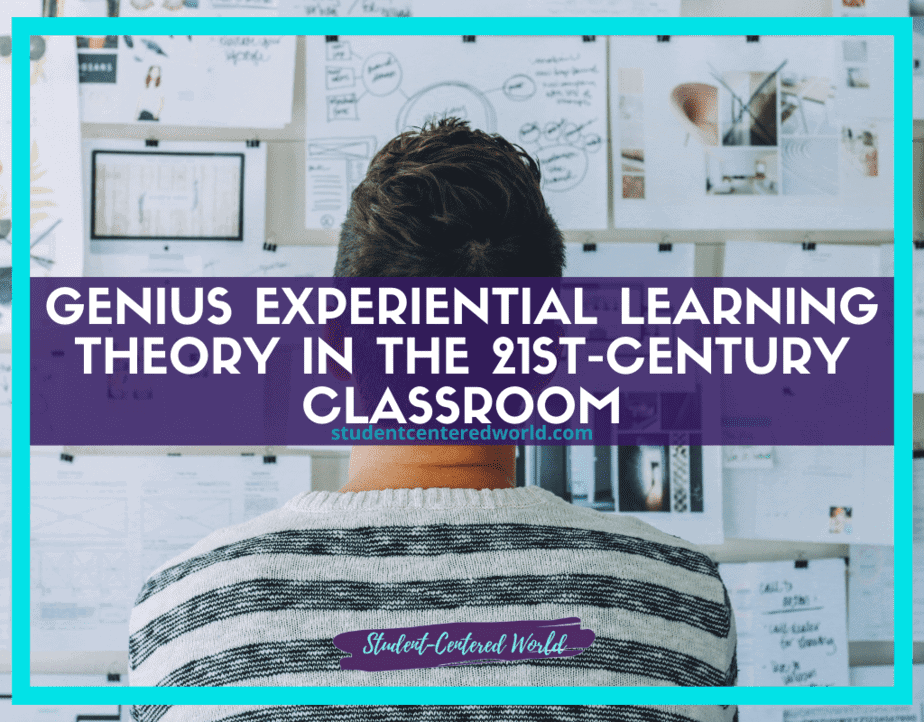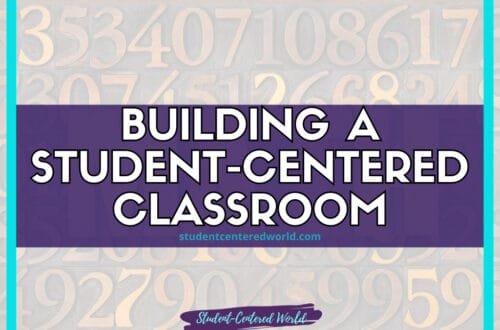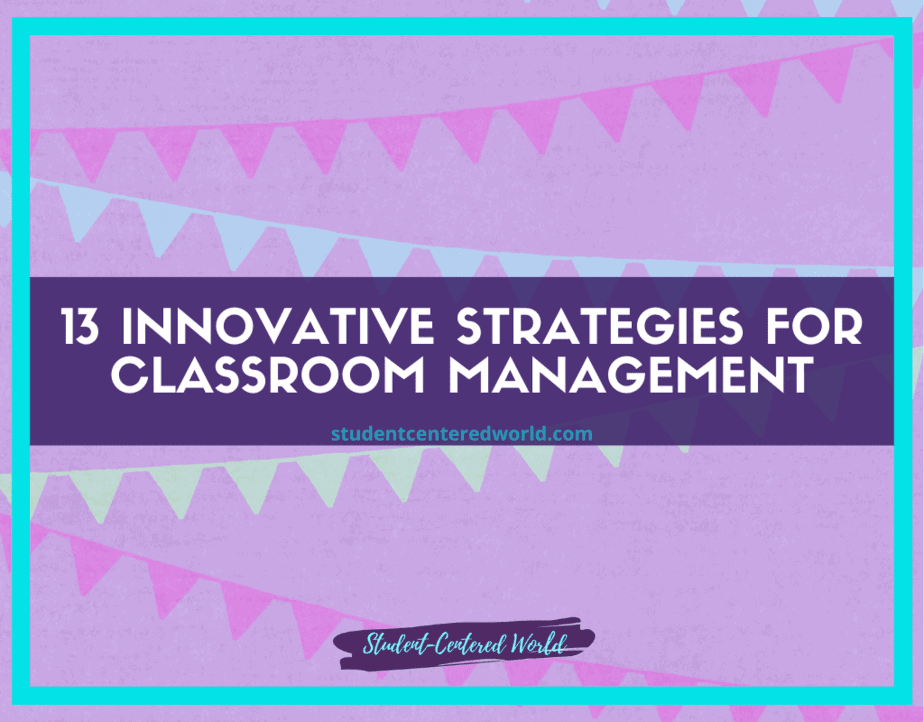The Eye-Opening Pandemic Effects on Students Moving Forward
Does anyone else feel like the pandemic changed the game of learning forever? I think we all know it has, but we don’t want to admit that sometimes we need to change how we teach in order for students to get the experience they deserve, especially by understanding the pandemic effects on students.
It’s no secret that the COVID-19 Pandemic had a huge impact on our education systems, especially in the United States. With a forced entry into online learning (when many school districts were not fully equipped or trained in it), school closures when the pandemic began made our school days look very different.
There is a huge concern that student learning suffered during that time and that many students returned to school on varying grade levels that are not appropriate for their age. This can be due to remote learning, social isolation, or other variations of in-person learning that school districts attempted to create during the pandemic.
I am going to go out on a limb here and discuss student performance: I don’t think the previous years and the craziness of schooling are what had negative impacts on current academic achievement. Kids are resilient and we are the ones that set the standards for what is “ahead” and what is “behind” (frankly, the whole world took a pause, so it’s not like we had something catastrophic happen here that wouldn’t have allowed our students to compete on a global level).
I think there are two key pieces to take into consideration right now:
1. We need to take into account the percentage of a child’s life the pandemic took up. As adults, we know that it was a tricky (roughly) three years of time…a mere blip that needs to be overcome. However, depending on how old a child is, that three years may be a SIGNIFICANT amount of their lifetime. They might not even remember life before the pandemic. This has a negative impact on what we see as “normal”, but they don’t know any different. It’s not a matter of “not using it as an excuse” anymore, but a legitimate life-altering event that makes significant differences to the normalcy of their existence.
2. I think what is happening to our students is what is happening to a lot of adults in the workforce right now: they were able to see during that time period that traditional methods of in-person instruction weren’t necessarily the most effective way of learning anymore (or that hours of seat time isn’t necessary to learn information).
Let me explain…
Our students are apathetic
It’s not like I’m telling you anything you don’t know right now. Trying to motivate the kids in the classroom is like pulling teeth compared to what it was like before the pandemic.
One reason is that they’re still not in a full routine. With quarantines and masks vs. no-masks and frankly, anti-teacher rhetoric (compiled with a noted lack of mental health services), the kids aren’t as invested in their academic success as they once were because it isn’t comfortable anymore. They don’t know what to expect from day-to-day (and neither do we), so they aren’t clinging to anything other than social interactions because that is something they can control.

They also spent however many months learning via remote instruction. They were able to figure out really quickly how much effort was necessary to get the job done (just like they always have in the school building). However, now they realize with that change of scenery that the amount of effort they gave during that time (when we were giving all that grace, right?) should be enough to get them through now….especially in schools where the expectation is that it’s business as usual again.
I’m not saying this is the right frame of mind, but if they don’t have a home environment that is constantly explaining the contrary to them….or they’re just allowing their own thoughts to run the show…this would seemingly make logical sense to them, right?
Mental Health Issues are Prevalent
Research “according to the latest available data from UNICEF, globally, at least 1 in 7 children has been directly affected by lockdowns, while more than 1.6 billion children have suffered some loss of education. The disruption to routines, education, recreation, as well as concern for family income and health, is leaving many young people feeling afraid, angry, and concerned for their future”
Yet, even though we see this, most schools didn’t have the services available to combat it. Not every family is comfortable with dealing with mental health challenges and others that might be willing, can’t afford it. Teachers may be their only option for emotional support and now, to boot, there is an attack on misinformation surrounding social-emotional learning.
We have known for years that when we are having an issue with a student in school, it’s likely due to some outlying issue (rarely is it ever actually us). If that’s the case, and we have these large, vulnerable groups dealing with the negative effects of the trauma we have ALL lived through the past several years, it’s no wonder that student’s learning is being affected. Academic performance is the last thing young people (without family members expressing a passion for education) are concerned about when they are trying to navigate through all this trauma alone.
These K-12 students need an avenue that meets them where they are, helps them through the trauma, and allows them to get their student achievement back on track.
Sounds great…but how?!
As teachers are already completely overwhelmed, trying to take a step back to come up with a plan to combat the pandemic effect on students is difficult at best.
Truly the answer is learning execution in many cases.
Whether it’s because they are overloaded with social media or video games or simply not inspired due to the trauma of the pandemic and life in general, the goal of getting those students engaged in their learning is reachable, but it is not going to happen by trying to make them sit in a seat for five periods a day.
I think the solution lies in the future of education. If you’re trying to teach the same way you taught before the pandemic, it’s going to fall flat.
Sometimes, it just takes some creativity. This is not an excuse to get out of the day-to-day work that needs to be done, but it’s a way to help your students remember how important their learning is. If they see that every time you come up with something new, what you’re trying to get across is “You are mattering; No matter whose school this was before or what you are dealing with at home or in your personal life, this is still about you, and it’s still important.”
As you make those small gains, you’re truly having a positive impact long term…don’t forget that.
It’s really hard to explain how important education is when it is not something that most students see as a priority every day. We need to work with them on finding ways to make that priority happen even if they don’t realize it when they walk in the door.
So instead of feeling like you’re talking to the wall as we try to make it through the academic year, try to make some small changes in how you’re distributing content.
Student Choice
Student choice is a key piece in the Student Engagement Framework. You can read more in-depth about student choice here, but this makes all the difference in the world with a student who isn’t even going through the motions. Just recently I had a teacher I worked with reach out after she tried an activity based on student choice in the classroom:

And student choice isn’t just for high school students (or even college students). I have seen this implemented seamlessly in the youngest grades in our school systems. I’ve seen teachers do a beautiful job with this while distance learning in online classes. Low-income students and those who live in affluent areas have success with it. The best part? If it’s implemented correctly (and this is where a lot of teachers struggle), it takes just as much time to prepare as a traditional lesson (sometimes even less).
With student choice, you’re focusing on the basic needs of students as an important role in content delivery. The student progress you will see after proper implementation will blow your mind!
If you need help, don’t be afraid to ask for it.
You may not get what you asked for, but I guarantee there is something out there that will fit where you are and what you need to do.
Don’t try to just plug your students into a box and hope for the best. This is not a plug-and-play generation anymore (if ever it was). If we don’t figure out how to cater to the needs of individual students, we will never be able to meet that important goal of education…and will continue to fail.
Isolation in schools isn’t helping anything; strike up a conversation with a colleague and ask questions. The only way you will make significant changes is by stepping outside your comfort zone and giving new ideas a try.
I truly believe that we, as teachers, we have the power to make a difference in our students’ lives…after all, they only learn from what they are taught. And if they aren’t learning because their trauma outweighs their belief in education or there is no example set at home, then we need to find a way to help them learn that education is important and finding a safe place for learning will lead them to the right path….a path that will have a significant increase in success.

If you don’t know where to begin, I’m more than willing to make a few suggestions.
The key is forward-thinking and constant creativity with teaching strategies. You need to make it apparent that education is important and make sure they are getting what they came there for.
Whether it’s through learning games or other means, just don’t forget why your students are in your classroom every day. We just have to be willing to see the forest through the trees.
What Kids Need the Most Right Now
Everyone is exhausted. Our students? They need a chance to be kids right now.
I’m not saying we shouldn’t set the bar high: we should, 100%. But multiple years of these students’ childhoods have been stripped of them in terms of what they should have been (I could argue that some of those changes were a good thing for the educational system, but that’s a different conversation for another day).
To imagine what some of our kids are going through and then put more on their plate? It’s not the right thing to do.
When we start to reimagine education in terms of these students, we can better understand our true goal: helping them through whatever they’re going through (and that includes things like anxiety and depression, and stress).
We need to help them get through this and get back to their childhoods.
What we need are new ideas, new rules, and more creativity than ever before.
We can’t afford not to have them because the kids are already dealing with enough.
We need to help them get back to being able to enjoy learning and being kids while they’re still in that transitional period.
If you teach the same way you taught before the pandemic or even during online teaching, it’s going to be a constant battle to reach your students. You have to do more than just teach-you have to inspire them to learn, and you can’t do that if they feel like they are doing something wrong by being kids.
Truly take a step back and look at student behavior…remember, a child’s native reaction is always due to a need not being met.
You have to help them get back there (and they will with the right guidance). The world needs our best teachers now more than ever before, so don’t forget that you are more than just a teacher; you are an influencer, and the lives of these kids depend on it.
We need to push them out of their comfort zones because right now they don’t belong in their own skin. They need to be pushed into learning about themselves (and for some, that means having affection shown toward them by someone other than a family member), which is an incredibly important factor in the education system right now (and unfortunately, it’s not being emphasized in the correct way).
And if you don’t know how to do that, then get creative and find out what makes them tick. It may be different for everyone, but the goal should still be the same: finding what works best for each student.

No one can make these decisions but you. No one knows your students as you do, so don’t be afraid to push them out of their comfort zones because the only way they’re going to learn is by doing something different.
I can’t stress enough how important it is that every single student needs this kind of attention right now. We can no longer afford to ignore any child in our classrooms.
We need to make it through these next few years and come out the other side with a workforce that will be able to rebuild our society. It’s going to take everyone working together, which means we need every adult working together as well (and that means making education more than just about filling up time).
We need better schools and better programs. We need to rethink what we’re doing and how we can do it better.
We need to use this time to reevaluate what our true goals are in education and help these kids see that there’s a light at the end of the tunnel.
Don’t forget why you got into teaching in the first place: because you wanted to make a positive difference in the lives of kids. We all need to be supporting each other through this because we can’t do it alone (and we don’t want to).
We’re going to get through these next few years and come out on the other end better than before, but we can only do that if we work together and find new ways of doing things.
If you ever have questions, I’m here. If you want to vent about how your day was, I’m here for that too. We all need to be there for each other because we’re all in this together-we just have to remember that before it’s too late. And when the time comes that these kids are adults in the workforce, we’ll be able to say that we were there for them in their time of need.
Stop Driving the Teacher Struggle Bus
Are you struggling with student engagement, apathy, or keeping your class on track?
💫💫 There’s hope! 💫💫
Join my free teacher workshop “Choosing Choice” and in just 60 minutes, you’ll craft a practical plan to revitalize your teaching. Discover the magic of student choice in boosting engagement, gain quick implementation ideas, and explore strategies for year-long success.
Unlike overwhelming workshops, my approach guides you in real-time, providing more classroom options, reducing stress, and giving you more personal time.
Plus, you’ll earn a 1-hour professional development certificate and have 7 days of access.
Don’t miss this chance to transform your teaching; click below to secure your spot now!
This article was originally published on February 22, 2022






